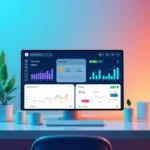Revenue Projections
Introduction

Overview of revenue projections in financial planning and forecasting
Revenue projections are essential estimates that organizations make to predict future revenue streams based on historical data and market trends. These projections play a crucial role in financial planning and help organizations strategize for the future. By accurately forecasting revenues, companies can adjust their operations, allocate resources wisely, and ensure sustainable growth.
Accurate revenue projections help businesses prepare for potential financial challenges and identify growth opportunities. A well-informed forecast allows decision-makers to set realistic goals and avoid underestimating expenses or overextending financial commitments. This accuracy not only secures the company’s financial health but also builds investor and stakeholder confidence.
Revenue projections are interconnected with other financial forecasts, such as expense forecasts and cash flow analysis. These relationships are critical for creating a comprehensive financial strategy. When revenue predictions align with expense estimates, it helps organizations visualize their entire financial landscape, enabling better long-term planning and resource allocation.
Key Trends in Revenue Projections

Emerging trends
Artificial intelligence (AI) and machine learning are transforming the way organizations approach revenue projections. These technologies facilitate the analysis of vast amounts of data to identify patterns and trends that human analysts might miss. As a result, businesses are increasingly relying on AI-driven insights to enhance their revenue forecasting accuracy and speed.
Predictive analytics has emerged as a powerful tool to create more reliable revenue projections. By utilizing statistical algorithms and machine learning techniques, predictive analytics can provide a clearer picture of future performance, leading to improved decision-making processes. This trend allows companies to anticipate changes in the market, thus preparing them for both risks and opportunities.
The integration of real-time data into forecasting models is gaining momentum. With the rapidly changing economic landscape, having access to live data enables organizations to adjust their revenue projections on-the-fly. This adaptability ensures that businesses can respond to trends immediately, maintaining accuracy in their financial planning efforts.
Industry impact
The advancements in revenue projection methodologies are significantly impacting financial decision-making processes. Organizations are now equipped to make faster, data-driven decisions rather than relying solely on instinct or historical performance. This shift enhances the ability to seize new opportunities and mitigate potential risks in a timely manner.
As revenue projections become more sophisticated, reporting and analysis practices are evolving. Companies are adopting more strategic reporting frameworks that align with their forecasting models. This change ensures that stakeholders receive relevant and timely information that aids in steering the business towards its financial goals.
The role of financial professionals is also adapting to these shifts in revenue projection practices. While traditional financial roles focused primarily on reporting, there is now a growing emphasis on analyzing and interpreting critical data. Financial analysts are expected to engage more deeply with technology and analytics, transforming them into strategic partners in the decision-making process.
Challenges and limitations
Despite advancements, challenges such as data quality and availability persist in revenue projections. Organizations often struggle with incomplete or inaccurate data, which can lead to flawed forecasts. Ensuring high-quality data collection is paramount for producing reliable revenue projections and requires a concerted organizational effort.
Economic volatility presents additional hurdles in revenue projections. Unexpected market changes, geopolitical events, and health crises can dramatically shift projections, rendering previous forecasts obsolete. Businesses must remain flexible and agile to navigate these fluctuations without compromising their financial stability.
Maintaining accuracy and reliability in revenue projections is an ongoing challenge for businesses. With the dynamic nature of the market, even the slightest misjudgment can lead to significant setbacks. Therefore, organizations should consistently refine their forecasting methods to build resilience in their financial planning processes.
Future Outlook

Future developments
The future of revenue projections is poised to benefit from advanced forecasting models that integrate machine learning capabilities. These models promise enhanced predictive accuracy, allowing businesses to generate more nuanced and reliable forecasts. The result will be a more intuitive approach to financial planning that can adjust to real-time market conditions.
A significant development anticipated in revenue projections is the increased integration with other business functions, such as marketing, operations, and sales. This holistic approach emphasizes collaboration between departments, facilitating unified forecasting and aligning strategic initiatives with financial goals. Such a comprehensive strategy can enhance overall organizational performance.
Automation is likely to play a critical role in refining revenue projection processes. By streamlining repetitive tasks, organizations will free up financial professionals to focus on analysis and strategy. This shift not only enhances efficiency but also contributes to more accurate and timely financial insights, resulting in better decision-making outcomes.
Market predictions
The revenue projection software market is forecasted to experience significant growth in the coming years. As organizations recognize the value of accurate forecasting, investments in specialized software tools will likely increase. This trend promises to drive innovations that enhance forecasting methodologies and improve usability for finance teams.
As companies continue to embrace digital transformation, the adoption of cloud-based revenue projection solutions is on the rise. Cloud technologies offer flexibility, scalability, and accessibility, allowing financial professionals to work seamlessly regardless of their geographical location. This shift not only optimizes collaboration but also accelerates decision-making cycles in businesses.
The growing complexity of financial forecasting is generating a heightened demand for specialized expertise. Organizations will need financial professionals who can navigate advanced forecasting technologies and methodologies effectively. This trend indicates that upskilling and continuous learning will be vital for finance professionals seeking relevancy in an evolving landscape.
Potential impact on users
The advancements in revenue projection methodologies are expected to enhance decision-making capabilities for users. With access to accurate forecasts, decision-makers will be better equipped to formulate strategies and allocate resources efficiently. This empowerment leads to a more proactive approach to financial management, fostering organizational growth.
As organizations leverage automated tools and real-time data, operational efficiency and productivity will see notable improvements. By reducing time spent on data collection and manual reporting, employees can focus on value-added activities that drive business success. This shift promotes a culture of agility, where quick adjustments can be made in response to external changes.
Ultimately, the enhancements in revenue projection processes will lead to better financial outcomes for organizations. Accurate forecasts will support sound business decisions that contribute to revenue growth and profitability. By investing in innovative approaches to revenue projections, companies can position themselves favorably in a competitive marketplace.
How to Choose the Right App

Step-by-step guide
Start the app selection process by assessing your current forecasting processes. A thorough review will highlight areas that require improvement and guide you in identifying features that can enhance your operations. This initial step is fundamental in establishing a solid foundation for your decision-making.
Once you have assessed your current processes, the next step is to identify your specific needs regarding revenue projections. Consider factors such as the level of detail required, frequency of updates, and data sources. Fully understanding your needs will enable you to narrow down options effectively.
With your needs defined, conduct a thorough evaluation of available revenue projection apps. Look for user reviews, conduct trials, and examine the features each platform offers. Creating a comparison table can help visualize strengths and weaknesses, assisting in making an informed decision.
After selecting an app, focus on implementation and integration within your workflows. Establish a clear rollout plan, provide training for users, and ensure technical support is accessible. A smooth implementation process will facilitate adoption and maximize the app’s benefits for your organization.
Conclusion

In conclusion, effective revenue projections are vital for informed decision-making in financial planning and forecasting. As businesses adapt to emerging trends and advanced technologies, maintaining accuracy and reliability becomes increasingly imperative. By assessing specific needs and selecting the right tools, organizations can significantly enhance their forecasting capabilities, leading to improved financial outcomes and sustained growth. The future of revenue projections is bright, with boundless possibilities that drive businesses toward success in an ever-evolving economic landscape.
Factors to consider
When selecting a revenue projection app, it’s crucial to assess your business size and specific needs. Smaller companies may require simpler solutions, while larger enterprises often benefit from more sophisticated features. Understanding your unique requirements will guide you in finding an app that aligns with your organizational goals.
Industry specifics play a significant role in determining the right revenue projection app. Different sectors may have unique forecasting needs, so evaluating whether an app caters to your industry can optimize its effectiveness. Look for platforms that offer features tailored to your sector to enhance accuracy and usability.
Ensure the app you choose integrates seamlessly with your existing systems. Compatibility is key to maintaining operational coherence and avoiding potential data silos. An app that easily links with your current software can save you time and eliminate friction during implementation, enhancing overall productivity.
Cost considerations are always essential when choosing the right app. Evaluate the total cost of ownership, including any subscription fees, maintenance costs, and additional training resources. Setting a clear budget will help streamline your decision-making process and ensure an adequate return on investment.





